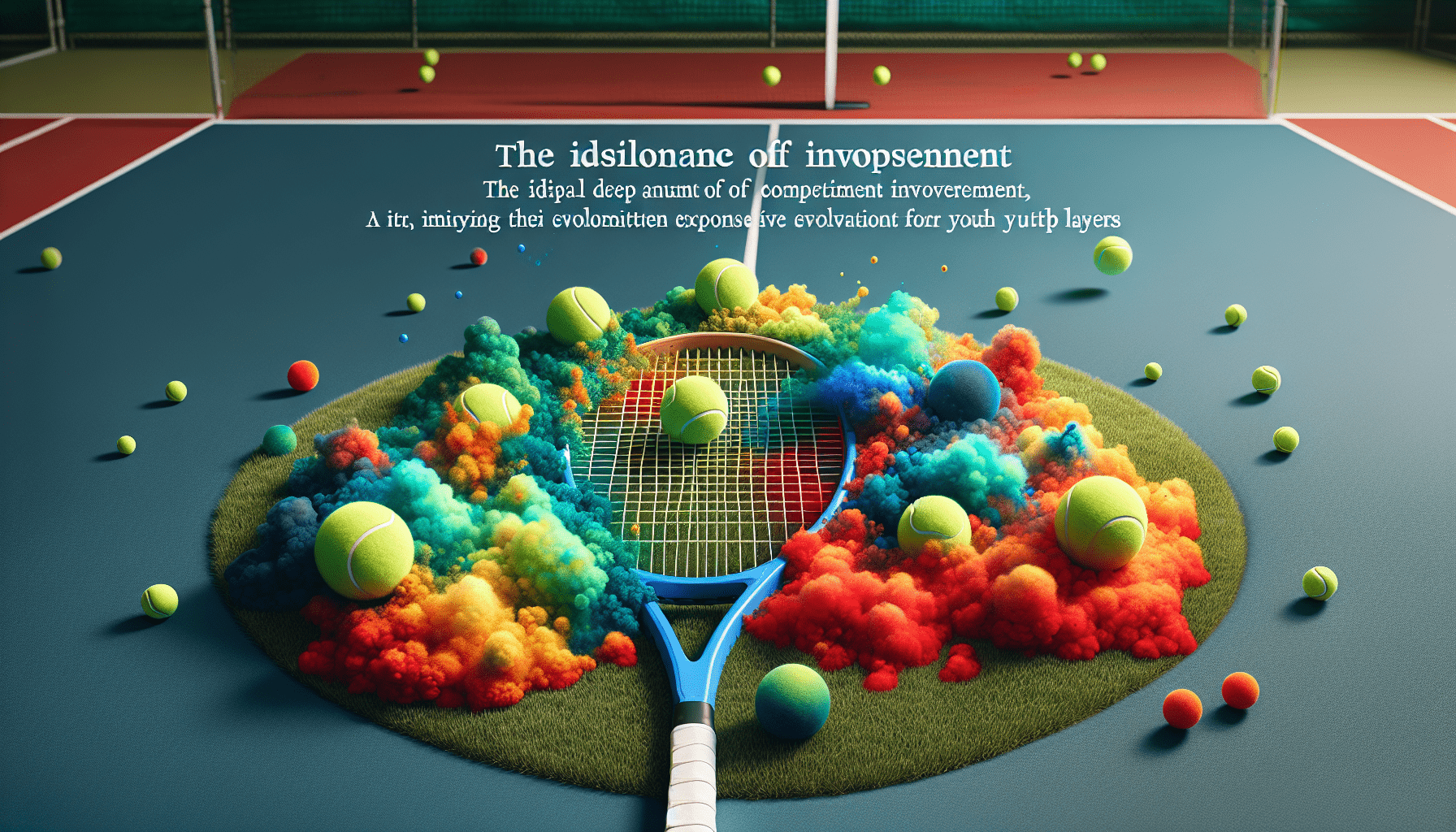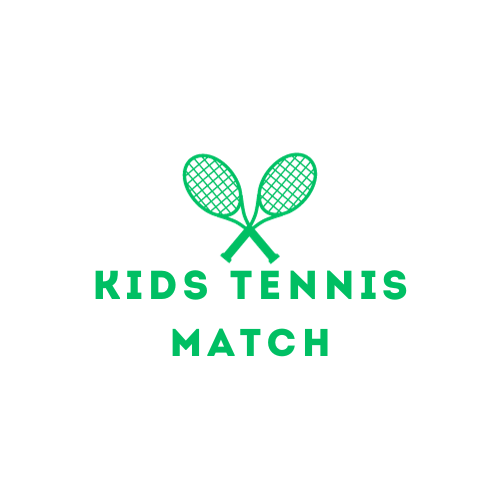In the world of junior tennis, the question of how many tournaments a young player should participate in is a common one. While it may be tempting to sign up for every event available, it’s important to find a balance that allows for proper development without risking burnout or injury. By considering factors such as age, skill level, and individual goals, you can create a tournament schedule that is both challenging and manageable for your junior player. With the right approach, they can gain valuable experience, improve their game, and ultimately have more fun on the court. How Many Tennis Tournaments Should A Junior Play?
How many tennis tournaments should a junior play? This is a common question among parents and young tennis players who are looking to navigate the competitive junior tennis circuit. In this article, we will discuss factors to consider when deciding how many tournaments a junior should participate in, the benefits of playing in tournaments, and how to maintain a healthy balance between competition and skill development.

Factors to Consider
When considering how many tennis tournaments a junior should play, there are several factors to take into account. These factors will vary depending on the age, skill level, and goals of the junior player.
Age
The age of the junior player is a significant factor to consider when determining how many tournaments they should participate in. Younger players may not be emotionally or physically ready to compete in numerous tournaments due to the demands of travel, time commitment, and competition. It is essential to consider the child’s age and maturity level when deciding on tournament participation.
Skill Level
The skill level of the junior player is another crucial factor to consider. Beginners may benefit from playing in local, small-scale tournaments to gain experience and confidence on the court. As a player’s skill level improves, they may choose to participate in more competitive tournaments to test their abilities and challenge themselves. It is essential to gauge the player’s skill level accurately to ensure they are competing at an appropriate level.
Goals
The goals of the junior player will also influence how many tournaments they should play. Some players may have aspirations of playing collegiately or professionally, while others may play for fun and fitness. Understanding the player’s goals will help determine the appropriate tournament schedule to support their ambitions and development in the sport.
Benefits of Playing in Tournaments
Participating in tennis tournaments offers numerous benefits for junior players. These benefits go beyond just improving technical skills and include personal growth, character development, and valuable life lessons.
Competition
Tournaments provide junior players with the opportunity to compete against other players of similar skill levels. Competing in tournaments helps players learn how to handle pressure, manage nerves, and develop mental toughness on the court. These experiences can translate into valuable life skills both on and off the tennis court.
Skill Development
Playing in tournaments allows junior players to put their training and skills into practice in a competitive setting. Tournaments provide players with real match experience, which can help them identify areas for improvement and work on tactics and strategies to enhance their game. The more tournaments a player participates in, the more opportunities they have to develop their skills and grow as a tennis player.
Social Interaction
Tournaments offer junior players the chance to meet and interact with other players who share their passion for tennis. Building friendships with other players, coaches, and tournament officials can create a sense of community and camaraderie within the junior tennis circuit. These social connections can enhance the overall tennis experience and make tournaments more enjoyable for young players.
Finding Balance
While tournaments can be beneficial for junior players, it is essential to find a balance between competition and skill development. Playing in too many tournaments can lead to burnout, fatigue, and potential injuries. It is crucial to consider the following tips to maintain a healthy balance when participating in tournaments.
Rest and Recovery
Ensuring that junior players have adequate rest and recovery time between tournaments is crucial for their overall well-being and performance. Overtraining and playing in back-to-back tournaments can increase the risk of injury and mental exhaustion. Encouraging players to take breaks, cross-train, and focus on recovery can help them perform at their best during competition.
Training Schedule
Balancing tournament play with a consistent training schedule is essential for junior players to continue developing their skills and improving their game. Coaches and parents should work together to create a training plan that supports tournament participation while also focusing on technical, tactical, physical, and mental aspects of the game. Finding the right balance between training and tournament play is key to long-term success in tennis.
Goal Setting
Setting realistic and achievable goals for tournament play can help junior players stay motivated, focused, and engaged in their development. Encouraging players to set short-term and long-term goals related to tournament performance, skill development, and personal growth can provide direction and purpose to their tennis journey. Goals can help junior players stay committed, driven, and resilient in the face of challenges on and off the court.
Tournament Planning
When deciding how many tournaments a junior should play, it is essential to consider the logistics, costs, and scheduling of tournaments. Planning ahead can help make the tournament experience more enjoyable and manageable for both players and parents.
Tournament Selection
Choosing the right tournaments for a junior player depends on their age, skill level, goals, and availability. Parents and coaches should consider factors such as tournament format, competition level, location, surface type, and scheduling when selecting tournaments for participation. It is essential to strike a balance between playing in local, regional, and national tournaments to provide a variety of competitive experiences for the junior player.
Travel Considerations
Traveling to tournaments can be a significant commitment for junior players and their families. Parents should consider factors such as travel time, expenses, accommodation, and tournament duration when planning tournament schedules. It is essential to balance travel with school commitments, family obligations, and rest to ensure that players are not overwhelmed by the demands of tournament play.
Financial Planning
Participating in tournaments can be a costly endeavor for junior players and their families. Parents should consider expenses such as entry fees, travel costs, coaching fees, equipment, and accommodation when budgeting for tournament play. Developing a financial plan and seeking sponsorship or financial aid can help alleviate the financial burden of tournament participation and allow junior players to focus on their game.

Conclusion
Determining how many tennis tournaments a junior should play is a personal decision that should be based on factors such as age, skill level, goals, and tournament planning. Participating in tournaments offers numerous benefits for junior players, including competition, skill development, and social interaction. Finding a balance between tournament play and skill development is crucial for the long-term success and enjoyment of junior tennis players. By considering these factors and following the tips provided, junior players can navigate the competitive tennis circuit successfully and achieve their goals in the sport.
